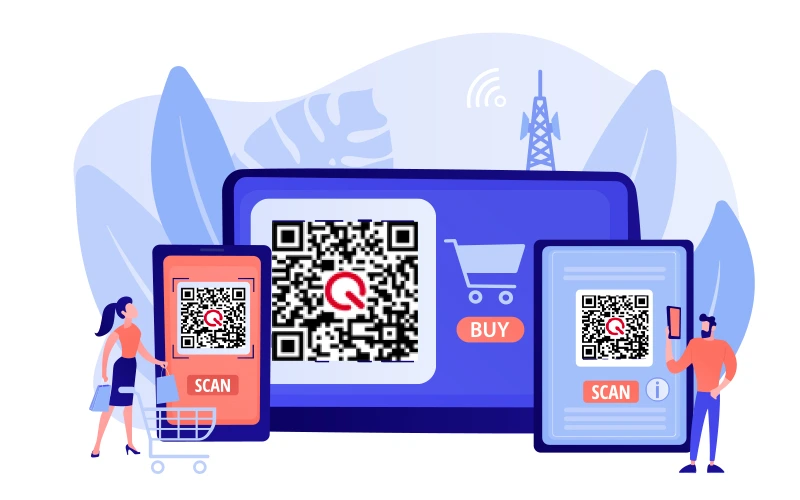
Enhancing Customer Experience with Interactive QR Codes
Interactive QR codes are transforming how businesses engage with their customers, bridging the gap between physical and digital worlds. With their ability to provide seamless, personalized, and immersive experiences, QR codes have become a crucial tool in enhancing customer satisfaction and driving brand loyalty. Here's a deep dive into how interactive QR codes elevate customer interactions and create opportunities for future innovations.
Key Benefits of Interactive QR Codes
1. Revolutionizing Customer Interaction
- QR codes allow instant access to product details, videos, tutorials, or promotions with a simple smartphone scan.
- They create a direct line of communication between brands and consumers, enriching the shopping journey.
2. Boosting Trust and Credibility
- QR codes enable transparent sharing of product information, certifications, and reviews, fostering trust.
- Genuine customer feedback collected through QR codes enhances brand reputation and reliability.
3. Bridging the Physical and Digital Gap
- QR codes connect physical stores with digital platforms, offering customers a cohesive omnichannel experience.
- For example, scanning a QR code in-store can lead to online product reviews or similar item suggestions.
4. Providing Personalized Experiences
- Dynamic QR codes allow brands to tailor content based on customer preferences and behaviors.
- Personalized discounts, offers, or recommendations accessed via QR codes enhance engagement.
5. Creating Seamless Shopping Journeys
- QR codes streamline processes like browsing, ordering, and payment, making shopping more efficient.
- Customers can interact with products digitally while physically present in the store, creating a hybrid shopping experience.
How Interactive QR Codes Improve Customer Interaction
1. Easy and Convenient Scanning
- Smartphones come equipped with built-in QR code scanners, eliminating the need for additional apps.
- Customers can quickly access detailed product information, reducing friction during the buying process.
2. Frictionless Access to Information
- QR codes provide instant access to URLs, videos, and contact details, ensuring convenience.
- Examples: Accessing a digital menu at a restaurant or scanning a product label for detailed specifications.
3. Enabling Feedback and Transparency
- QR codes simplify feedback collection, allowing customers to share their experiences in real time.
- Transparent product information via QR codes, such as ingredients or sourcing details, builds customer confidence.
4. Facilitating Loyalty Programs and Offers
- QR codes are integrated with loyalty programs to track rewards and offer exclusive deals.
- Scanning a QR code can unlock discounts, personalized recommendations, or early access to sales.
Best Practices for Utilizing Interactive QR Codes
1. Design Visually Appealing QR Codes
- Incorporate brand colors, logos, and design elements into the QR code to make it attractive.
- Ensure the code is easy to scan by maintaining high contrast and avoiding clutter.
2. Ensure QR Codes Link to Valuable Content
- Direct customers to content that adds value, such as tutorials, how-to guides, or limited-time offers.
- Regularly update linked content to keep it relevant and engaging.
3. Use QR Codes for Personalized Promotions
- Create dynamic QR codes that adjust based on customer location, time, or purchase history.
- Tailor offers to individual preferences, making interactions feel unique and exclusive.
4. Streamline Processes with QR Codes
- Integrate QR codes into the purchasing journey, from product discovery to payment.
- Example: Allow customers to scan a code for contactless checkout or curbside pickup.
Future Opportunities for Interactive QR Codes
1. Augmented Reality (AR) and Virtual Reality (VR) Integration
- QR codes can launch AR or VR experiences, such as virtual product demonstrations or immersive storytelling.
- Museums and tourism boards use QR codes for virtual tours, enhancing visitor engagement.
2. Contactless Payments and Authentication
- QR codes enable secure and quick payment options, eliminating the need for physical cash or cards.
- They are increasingly used for ticketing, access control, and identity verification.
3. Advanced Analytics and Data Tracking
- QR codes can collect valuable data on customer behavior, such as scanning frequency and preferences.
- Insights from analytics allow brands to refine marketing strategies and improve product offerings.
Conclusion
Interactive QR codes are a powerful tool for creating meaningful connections between businesses and their customers. By providing personalized, convenient, and engaging experiences, QR codes not only enhance customer satisfaction but also drive brand loyalty. With advancements like AR integration and analytics, the future potential of QR codes is limitless.
Embrace the power of interactive QR codes to elevate your customer experience and stay ahead in the competitive digital landscape.